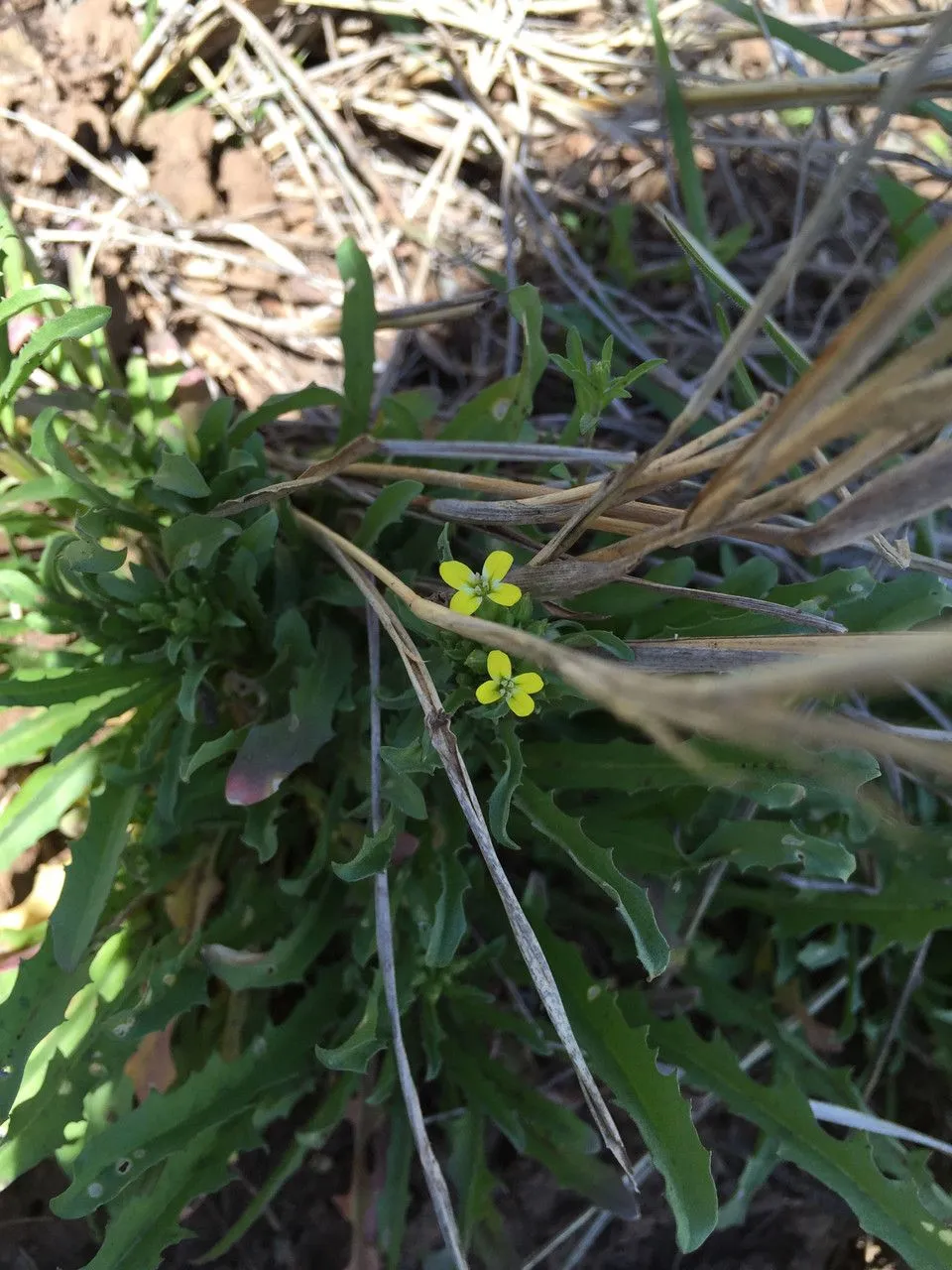
Author: L.
Bibliography: Demonstr. Pl.: 17 (1753)
Year: 1753
Status: accepted
Rank: species
Genus: Erysimum
Vegetable: False
Observations: Europe to W. Himalaya
Spreading treacle mustard, scientifically recognized as Erysimum repandum, is a plant that draws curiosity due to its extensive native range from Europe to the Western Himalayas. Belonging to the Brassicaceae family, this species was first documented and described by the renowned botanist Carl Linnaeus in 1753, as reflected in his seminal work “Demonstr. Pl.: 17.”
Erysimum repandum thrives in varied habitats across its native regions, adapting to both temperate and semi-arid climates. Characterized by its spreading growth habit, this mustard species exhibits a flexibility that allows it to colonize diverse environments, from grassy fields to rocky outcrops. This adaptability has contributed to its widespread presence across different geographies.
The plant typically features lance-shaped leaves that are finely divided, providing a delicate yet resilient structure. During its flowering season, spreading treacle mustard produces small but vibrant flowers, which are usually yellow in color. These flowers not only enhance the visual appeal of the plant but also play a crucial role in attracting pollinators, thereby contributing to the ecosystem’s biodiversity.
Despite its unassuming appearance, spreading treacle mustard holds significant ecological importance. It serves as a pioneer species in disturbed sites, aiding in soil stabilization and preventing erosion. Moreover, as a member of the Brassicaceae family, it shares genetic and horticultural ties with many cultivated crops, providing potential insights for agricultural research and plant breeding.
Historically, Erysimum repandum has also been recognized for its potential medicinal properties. Traditional remedies have occasionally utilized the plant for its purported benefits, although modern scientific validation of these uses remains an area for further exploration.
In summary, spreading treacle mustard stands as a testament to nature’s resilience and adaptability. Its extensive range, ecological contributions, and historical significance make Erysimum repandum a plant worthy of both scientific and horticultural interest.
Dan: orientalsk pileurt, udspærret hjørneklap, ægte stormhat
Swe: purpurpilört, rödsidenblomma, strandpilört, äkta stormhatt, rysskårel
Lit: riestasis tvertikas
Deu: sparriger schöterich, spreizender schöterich
Eng: spreading wallflower, bushy wallflower, spreading treacle mustard, treacle mustard, spreading treacle-mustard
Fra: vélar étalé
Est: gharaline harakalatv
Lav: jomota pērkonene
Ces: trýzel rozkladitý
Nld: uitgespreide steenraket
En: Spreading treacle mustard, Treacle mustard, Bushy wallflower, Spreading wallflower, Spreading Treacle-mustard
Cs: Trýzel rozkladitý
Da: Orientalsk pileurt, Udspærret hjørneklap, Ægte stormhat
Nl: Uitgespreide steenraket
Et: Gharaline harakalatv
Fr: Vélar étalé, Érysimum étalé
De: Sparriger Schöterich, Spreizender Schöterich, Brach-Schöterich, Brachen-Schotendotter, Brachen-Schöterich, Spreiz-Schöterich
He: אריסימון גלוני
It: Violaciocca infestante
Lv: Jomota pērkonene
Lt: Riestasis tvertikas
Sv: Purpurpilört, Rödsidenblomma, Strandpilört, Äkta stormhatt, Rysskårel
Taken May 2, 2020 by t an (cc-by-sa)
Taken Jan 1, 1900 by EOL − John Hilty (cc-by-nc)
Taken Jun 9, 2021 by Jose Maria Treviño Ferrer (cc-by-sa)
Taken Apr 4, 2020 by Isabelle Dor (cc-by-sa)
Taken May 2, 2021 by Lazarchevici Andrei (cc-by-sa)
Taken May 2, 2020 by t an (cc-by-sa)
Taken May 2, 2020 by t an (cc-by-sa)
Taken Jun 8, 2022 by Shelly Bacon (cc-by-sa)
Taken Jun 16, 2020 by Marc Witthandt (cc-by-sa)
Taken Jan 1, 1900 by EOL − John Hilty (cc-by-nc)
Taken Mar 15, 2016 by EOL − Jenny Smith (cc-by-nc)
Taken Mar 15, 2016 by EOL − Jenny Smith (cc-by-nc)
Taken Mar 15, 2016 by EOL − Jenny Smith (cc-by-nc)
Taken Mar 15, 2016 by EOL − Melissa Brown (cc-by-nc)
Taken Jan 1, 1900 by EOL − John Hilty (cc-by-nc)
© copyright of the Board of Trustees of the Royal Botanic Gardens, Kew.
© copyright of the Board of Trustees of the Royal Botanic Gardens, Kew.
© copyright of the Board of Trustees of the Royal Botanic Gardens, Kew.
Growth habit>: Forb/herb
Family: Myrtaceae Author: (F.Muell.) K.D.Hill & L.A.S.Johnson Bibliography: Telopea 6: 402 (1995) Year: 1995 Status:…
Family: Rubiaceae Author: Pierre ex A.Froehner Bibliography: Notizbl. Bot. Gart. Berlin-Dahlem 1: 237 (1897) Year:…
Family: Sapindaceae Author: Koidz. Bibliography: J. Coll. Sci. Imp. Univ. Tokyo 32(1): 38 (1911) Year:…
Family: Asteraceae Author: A.Gray Bibliography: Pacif. Railr. Rep.: 107 (1857) Year: 1857 Status: accepted Rank:…
Family: Fabaceae Author: Medik. Bibliography: Vorles. Churpfälz. Phys.-Ökon. Ges. 2: 398 (1787) Year: 1787 Status:…
Family: Aspleniaceae Author: (Cav.) Alston Bibliography: Bull. Misc. Inform. Kew 1932: 309 (1932) Year: 1932…